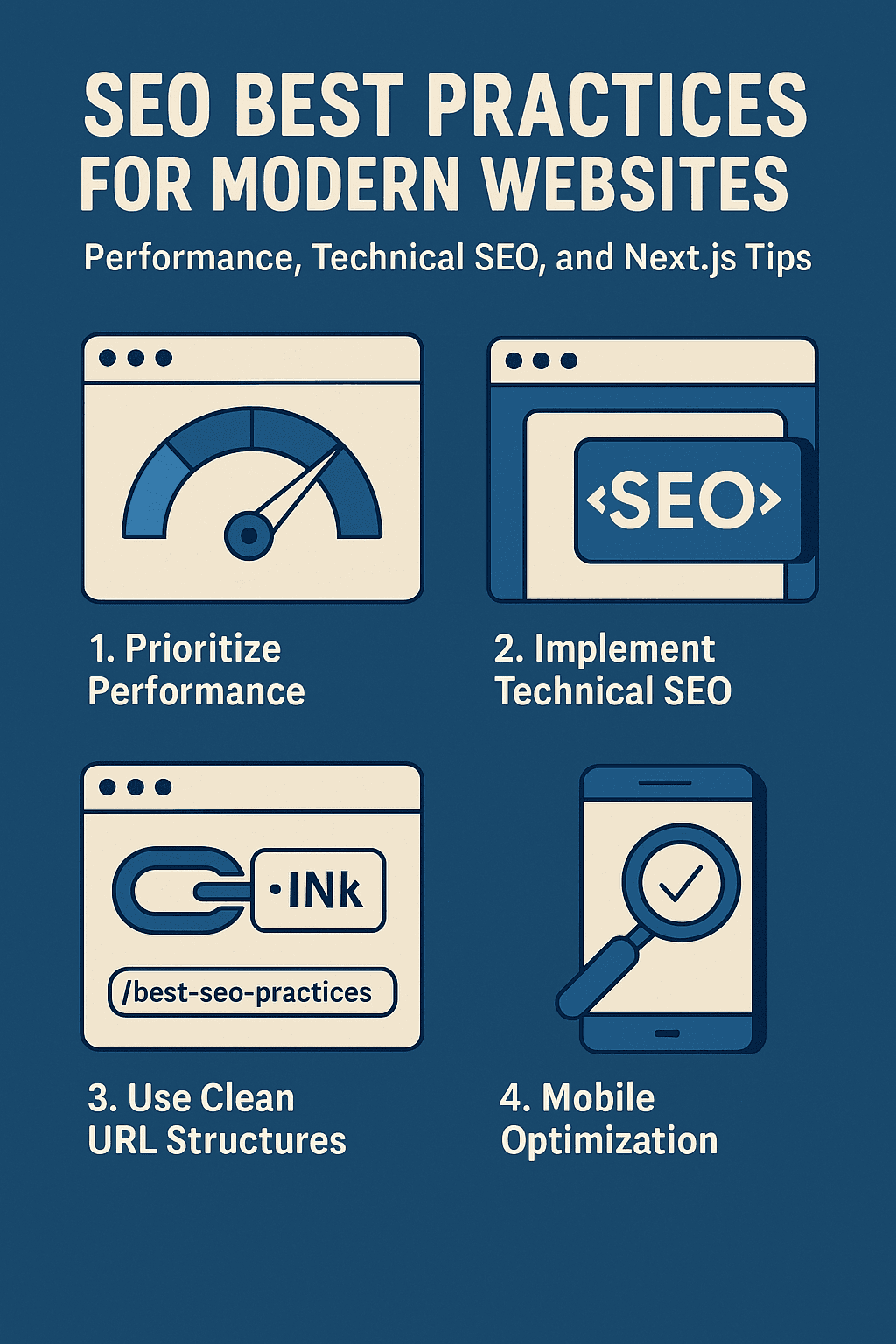SEO Best Practices for Modern Websites: Performance, Technical SEO, and Next.js Tips

Good SEO today is much more than keywords — it's about performance, structure, and user experience.
If you’re building modern websites, whether it’s with Next.js, Strapi, or any other stack, SEO remains one of the most crucial factors for visibility and traffic growth. But SEO has evolved — from technical optimizations to performance improvements and how fast your pages serve both humans and search engines.
In this guide, I’ll show you the most important SEO practices to ensure your site performs well and brings real organic traffic.
1. Prioritize Performance
Google uses page speed as a ranking factor. A fast-loading site improves both user experience and SEO.
- Use Next.js Image Optimization for automatic image resizing and compression.
- Serve assets with modern formats like WebP.
- Leverage CDNs to distribute content globally.
- Minify and bundle JavaScript and CSS.
Tip: Always test your site with tools like Google PageSpeed Insights to spot bottlenecks.
2. Implement Technical SEO Basics
Make sure your website is technically healthy:
- Meta tags: Titles and descriptions should be unique and descriptive.
- Open Graph & Twitter Cards: Control how your site appears on social media.
- Sitemap.xml: Helps search engines crawl your site effectively.
- robots.txt: Make sure search engines know which pages to index or exclude.
- Structured Data (Schema.org): Enhance your search listings with rich snippets.
In Next.js, you can manage metadata at the component level easily using the built-in <Head /> component.
3. Use Clean URL Structures
Keep your URLs short, descriptive, and keyword-rich. Avoid query strings where possible and prefer hyphens over underscores:
✅ /best-seo-practices
🚫 /blog?id=12345
4. Mobile Optimization
Mobile-first indexing is the default. Ensure your design is responsive:
- Test with Google Mobile-Friendly Test
- Optimize touch elements and spacing
- Ensure fast load times on mobile networks
5. Optimize Content for Keywords & Intent
Write content that answers your users' actual questions.
- Use tools like Google Search Console and Ahrefs to find keyword opportunities.
- Maintain natural keyword density (avoid keyword stuffing).
- Use clear headings and subheadings for readability.
- Incorporate long-tail keywords naturally.
6. Build a Strong Internal Linking Strategy
Internal links guide search engines and help users navigate your site.
- Link related articles and services.
- Use descriptive anchor text.
- Keep a clear hierarchy.
7. Maintain SEO Health Over Time
SEO is not a one-time job. Monitor regularly!
- Track rankings with tools like Ahrefs or SEMrush.
- Check for broken links.
- Update old posts with new data.
Need help with your site’s SEO? Check my web services at michaelouroumis.com. I offer audits, optimization, and full builds designed for performance and visibility.
My suggestion
Technical SEO is one of the strongest signals you can send to search engines. Paired with great content and performance, it builds your site’s reputation and brings consistent traffic over time.
If you want your site to attract visitors and perform like a top-tier platform, follow these steps, and you’ll be ahead of 90% of competitors.